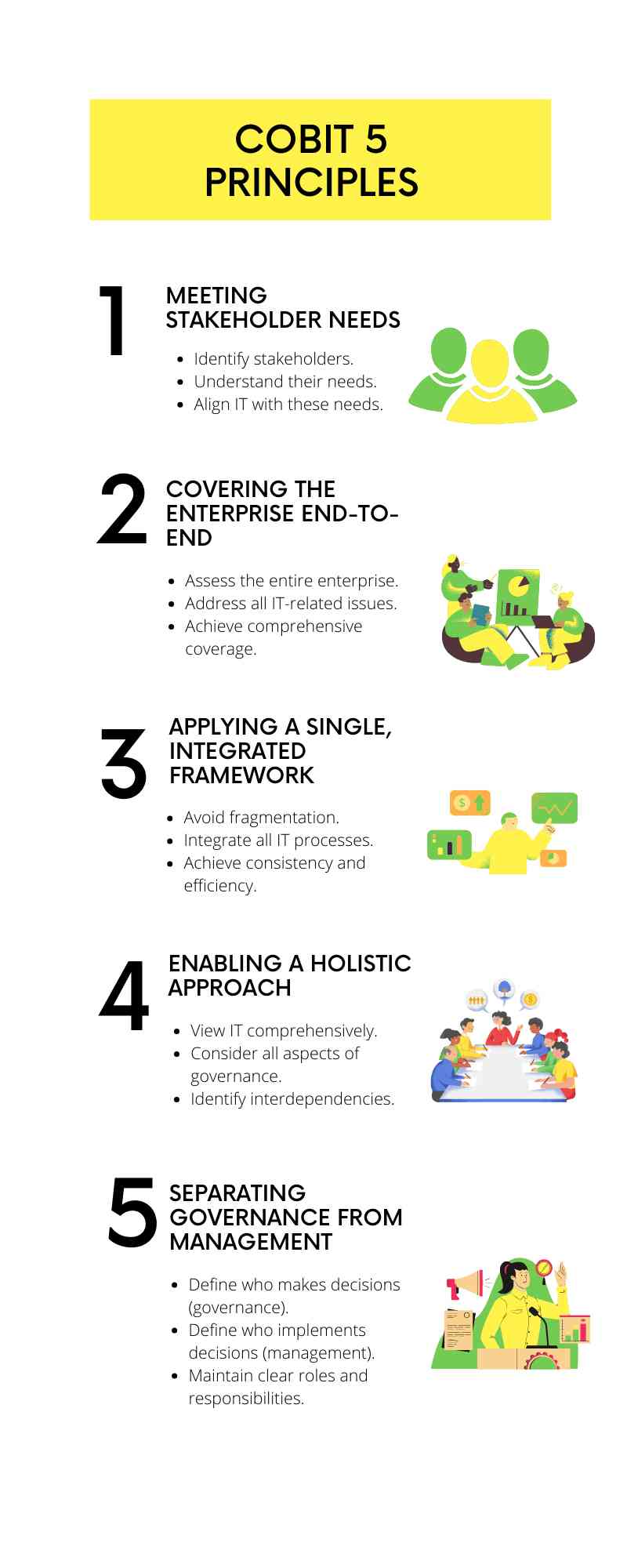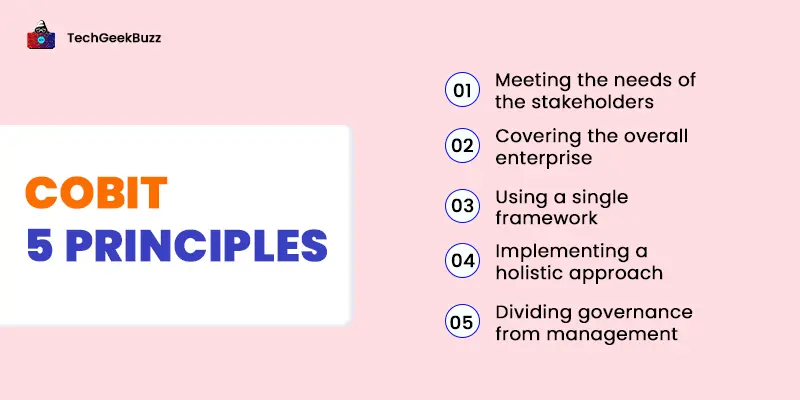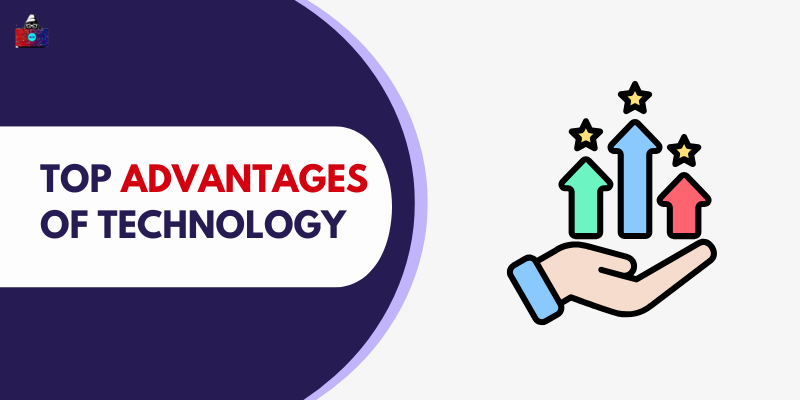Imagine a bus without a conductor. Directionless, right? To bring in order, structure, and direction, just like a bus needs a conductor, organizations need certain frameworks to manage their processes - COBIT 5!
COBIT stands for Control Objectives for Information and Related Technology.
COBIT 5 framework is a set of principles that focuses on meeting multiple business challenges, such as risk management, IT strategy, regulatory compliance, etc.
The IT world is huge. There is a humongous number of employees working in diverse fields. Every business requires employees to work efficiently and produce the most productive results. Right? For that, various rules or frameworks can help organizations add value to their work regime. COBIT 5 is one such example.
In this post, I will discuss the key concepts of COBIT 5 principles in detail.
COBIT 5 Principles - A Detailed Account
As the name suggests, COBIT 5 is a set of five principles that helps to manage and govern an IT enterprise effectively. These five principles are:
1. Meeting the Needs of the Stakeholders
Organizations succeed when the stakeholder needs are completely met.
This principle aims to focus deeply on decision-making, negotiation, and governance based on the different needs of the stakeholders.
COBIT 5 helps make effective strategies to tailor to the needs of the stakeholders. This process aims to utilize the available resources best, considering the maximum benefits and risks. There is a mechanism known as COBIT 5 Goals Cascade that aims to transform the needs of stakeholders into specific approaches and further map them into practices.
With this, companies ensure that they create value for the customers and increase customer satisfaction.
2. Covering the Overall Enterprise
COBIT 5 is an integrated framework that ensures complete integration between all the components in a company, such as employees, departments, and teams. Due to this integrated framework, it becomes easier to detect potential risks to the organization at an early stage. Thereafter, creating a strategy to make improvements to the same.
Further, COBIT 5 principles cover the business processes, workflow, and IT services. Here, the basic aim is to combine IT and enterprise governance.
The key elements that help achieve this end-to-end approach are:
- Aim of governance
- Understanding the scope
- Dividing the roles and responsibilities among the employees/ teams
- Members who can individually or collectively create an effective workflow
3. Using a Single Framework
Due to the continuously changing and evolving technology, keeping up with the pace and staying updated is important. This also increases the pressure on organizations to serve their customers with the latest technological advancements.
When COBIT 5 principles come into the picture, it helps the companies to focus on a single integrated framework. This further focuses on providing consistency in the workflow of the enterprise, which results in desired outcomes.
COBIT 5 aligns well with the latest standards and frameworks.
4. Implementing a Holistic Approach
The COBIT principles help provide management and governance in an organization with the help of enablers. You might wonder what exactly an enabler is.
An enabler helps bring the outcome of the decisions taken according to management and governance.
Further, they are factors that indicate whether the decisions, individually or collectively, will work or not. I am mentioning a few enablers below:
- Basic processes that define activities to help achieve certain goals of an organization.
- The culture and ethics of individuals and the enterprise are also important factors responsible for a successful governance and management ecosystem.
- A good infrastructure and services that help the enterprise with better IT services.
- Several policies and frameworks are responsible for the efficient day-to-day management of business.
5. Dividing Governance from Management
Most importantly, these principles separate governance and management in an IT ecosystem. Both of them serve different roles and responsibilities. There are different structures to fulfill both the management and governance frameworks.
COBIT uses EDM (evaluate, direct, and monitor) and PBRM (plan, build, run, and monitor) for governance and management, respectively.
Let me explain them separately:
- EDM understands the needs of a stakeholder, identifies the issues, makes decisions, and then monitors the performance to achieve goals.
- On the other hand, PBRM ensures that all the implemented activities and practices are sincerely monitored in accordance with government regulations.

What are the Benefits of COBIT 5 Principles?
COBIT 5 framework is an excellent option that covers a wide range of factors to ensure management and governance success in an organization.
Moreover, it is highly suitable for both small and medium enterprises as well as large corporations.
Check out some of the many benefits that COBIT 5 offers:
- It helps to maintain the IT-related risks at a tolerable level.
- With the help of implementing efficient technology, it ensures an effective operational ecosystem in the organization.
- It provides companies with methods to optimize the cost of IT technology and services.
- Helps to be compliant with the laws, policies, and regulations.
- Creates strategic goals to implement effective solutions to use IT services.
Final Words
There is a need to understand and analyze the existing methods and practices opted by the organization. That’s exactly where COBIT comes into the picture and improves the overall enterprise structure (based on management and governance).
COBIT 5 principles definitely come up with numerous advantages to organizations. The companies must adopt it to adhere to the latest policies and regulations to maintain a seamless ecosystem (both management and governance).
Further, you can take the assistance of professionals who are certified to implement and adopt the COBIT 5 framework.
I hope this article helps you understand the COBIT 5 principles in detail and make informed decisions.
People are also reading:



![What is Virtual Reality? [Types, Applications, Pros, and Cons]](/media/new_post_images/What_is_Virtual_Reality.webp)
